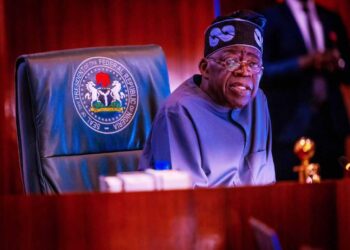The Federal Government has said Nigeria cannot service its debts with the current revenue generation capacity.
The government insisted that debt to Gross Domestic Products ratio is still within the threshold but admitted that the debt to revenue ratio is high.
Minister of Finance, Budget and National Planning, Zainab Ahmed, made this known in her presentation to the House of Representatives Committee on Aids, Loans and Debt Management in Abuja on Tuesday.

She came to defend the request by President Muhammadu Buhari for the National Assembly to approve the Federal Government’s external borrowings of $22.718bn.
Also appearing before the committee were the Minister of Works and Housing, Babatunde Fashola (SAN), Minister of State for Transport, Gbemisola Saraki; and Director-General of the Debt Management Office, Patience Oniha.
Ahmed, in her presentation, explained that the borrowings were from multilateral and bilateral lenders, which are concessional, semi-concessional, long-tenored and for the purpose of financing infrastructure and other social development projects.
The minister stated that the proposed borrowing plan was consistent with the subsisting Debt Management Strategy, which sought to replace short-term high-interest cost domestic debt with low-interest long-term external debt.
She added that it was one of the measures to moderate the level of debts being serviced by the country.
She stressed that the achievements were evidenced in the declining share of domestic debt in the total public stock, which moved from over 83 per cent in December 2015 to about 68 per cent in June 2019.
She said, “Nigeria, by the Fiscal Responsibility Act, has a ceiling of 25 per cent on the total debt stock to GDP, and this borrowing will still see us stay within those thresholds. The ratios as of December 31, 2018 and June 30, 2019 were 19.09 per cent and 18.99 per cent respectively.
“The debt service to revenue ratio, however, is high; it has been higher than desirable and provides strong justification for the current drive to increase both oil and non-oil revenues to enable more adequately resource government and service our debt obligations.”
The Debt Management Office also said in a statement on Tuesday that the loan was not a new request, but it rather represented those borrowings submitted to the 8th Assembly but yet to be approved before the expiration of the last assembly.
According to the DMO, the public debt stock was actually a cumulative figure of borrowings by successive governments over many years, adding, “It is therefore not appropriate to attribute the public debt stock to any one administration.”
The DMO said the requests in the plan were proposed borrowings from multilateral and bilateral lenders.






![President Muhammadu Buhari [Photo: © Presidency]](https://www.metronews.ng/wp-content/uploads/2020/05/buharim-75x75.jpg)

